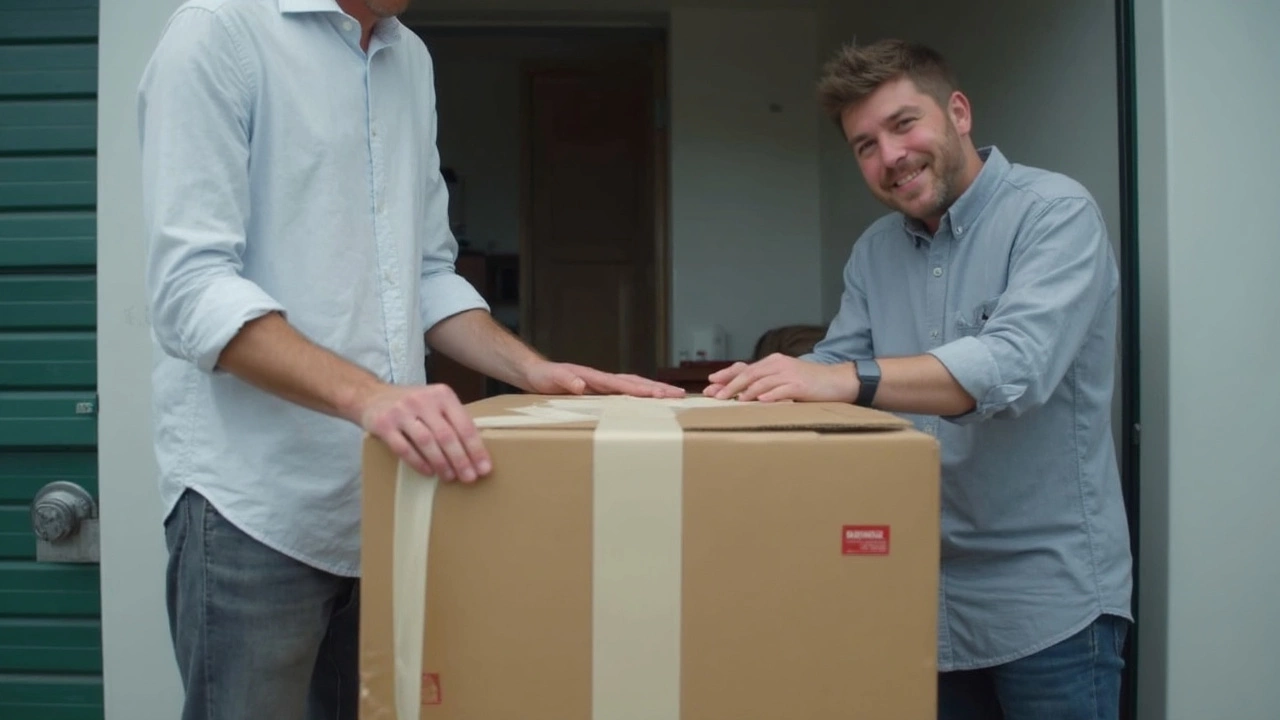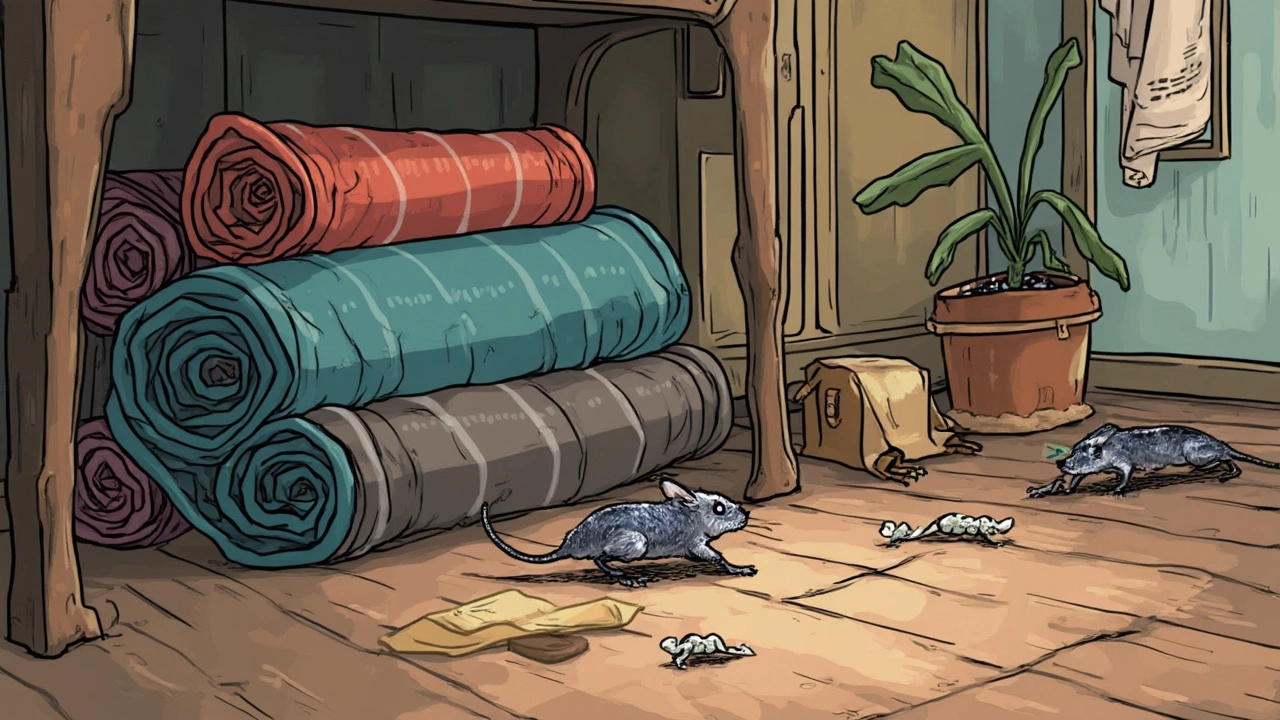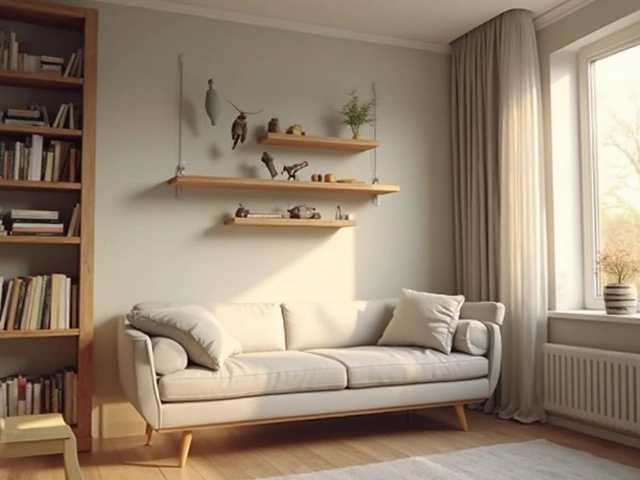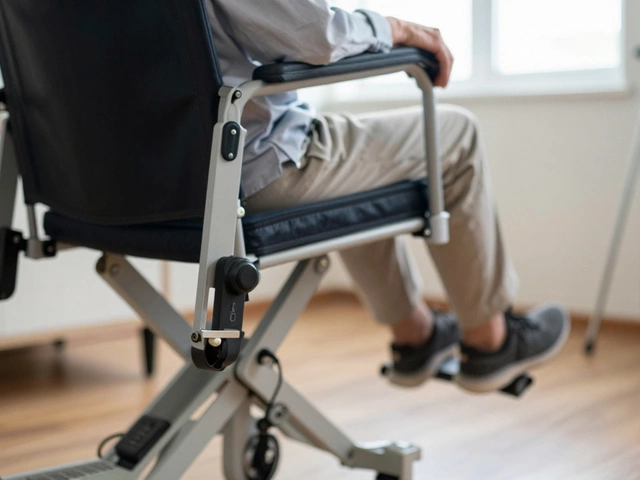 29
Apr,2025
29
Apr,2025
No one rents a storage unit expecting to find chewed wires or bug droppings when it’s time to unpack. But mice, cockroaches, and even spiders see your storage stuff as a five-star hotel. Why? These places are dark, quiet, and folks rarely check in. Add cardboard boxes, padded furniture, or crumbs left behind, and you might as well hang a 'pests welcome' sign.
If you’ve got furniture going into storage, think beyond just covering it with a sheet. Start by vacuuming couches, chairs, and drawers like you mean it. Food crumbs in a sofa cushion or a forgotten candy in a side table are basically gold for rodents and bugs. Give everything a wipe down, even in the cracks where crumbs like to hide. Dry it out, too—bugs love damp spaces, so get rid of moisture before you pack anything up.
- Why Bugs and Mice Love Storage Units
- Prepping Furniture and Belongings
- Smart Packing and Storage Layout
- Pest Deterrents That Actually Work
- Ongoing Checks and Quick Fixes
Why Bugs and Mice Love Storage Units
Storage units are like a theme park for storage unit pests. They’re quiet, not disturbed much, and packed with stuff that smells interesting to critters. Take mice, for example. They squeeze into holes far smaller than you’d guess—if a pencil fits in a gap, so can a mouse. And once they’re in, your cardboard boxes and blankets become premium nesting spots.
What really draws mice and bugs most is food and moisture. It doesn’t take much—just a lone cookie crumb or a little water from a leaky pipe. Ants and roaches are pros at sniffing out crumbs and spills. Cockroaches especially love dark, damp corners, and storage units usually have both. Mice are after that, too, but toss in the need to chew on stuff to keep their teeth short, and wiring or soft wood furniture can take a beating.
“Rodents and insects look for three things: shelter, food, and water. Storage units provide all three—sometimes without owners even realizing it,” says Dr. Karen Weber, pest management specialist at SafeHold Storage Solutions.
Let’s put numbers on it. According to a 2023 pest control industry report, nearly 18% of storage units in the U.S. report signs of mouse prevention problems every year, with cockroach sightings not far behind. If your facility is in a humid area or near fields, expect your pest risk to climb higher.
| Pest Type | Attraction | % Units Affected (US, 2023) |
|---|---|---|
| Mice | Food, nesting, shelter | 18% |
| Cockroaches | Moisture, crumbs | 15% |
| Spiders | Insects, hiding spots | 8% |
So, to keep bugs and storage unit pests away, you’ve got to outsmart what attracts them. Seal it, clean it, and know what to stash—and what to leave at home.
Prepping Furniture and Belongings
This part matters if you want to keep storage unit pests away. Start with a deep clean. Wipe down everything—table surfaces, couch cushions, bed frames—because grime, crumbs, and oils all attract bugs and mice. Pay extra attention to upholstered furniture. Run the vacuum over every inch, including under cushions and in all the hidden nooks where food bits or pet hair hide. Wipe wood and hard surfaces with a bit of white vinegar mixed with water—it helps sanitize and even acts as a mild repellent for some bugs.
Don’t shove anything into storage if it’s even a little damp. Damp equals mold, and both bugs and rodents love a moist, musty couch. Make sure furniture and fabrics are totally dry before you pack them away.
- Disassemble big items like bed frames, tables, and sectionals to cut down on hiding spots for pests—mice love tight, covered spaces inside assembled furniture.
- Seal drawers, cabinets, and storage bins tight. Painter’s tape or stretch plastic wrap works well for wood or laminate surfaces without leaving sticky residue behind.
- Avoid regular cardboard boxes if you can. Plastic bins with snap lids do a much better job keeping out bugs and mice. If you must use cardboard, go for new boxes, not ones that have already had a life in a grocery store or basement.
- Never store anything edible—not even ‘sealed’ pantry food or pet snacks. One box of cereal is an open invitation for a mouse infestation that will destroy way more than just that box.
- Stash smaller items—curtains, bedding, and clothes—inside sealed vacuum bags. These keep out moisture and bugs.
If you want a side-by-side look, check out how container types stack up for mouse prevention:
| Container Type | Pest Barrier Level |
|---|---|
| Cardboard Box | Low |
| Plastic Bin (Snap Lid) | High |
| Vacuum Bag | Very High |
Every bit of prep you do up front saves you headaches later. Little details like taping up a drawer or switching to a plastic bin really do make a difference when it comes to keep bugs out for good.

Smart Packing and Storage Layout
Stuffing boxes any old way is a fast track to bug and mouse problems. The way you arrange things can make or break your storage unit pests defense. When you’re packing furniture, stick to plastic containers with tight lids—cardboard is like a welcome mat for insects and rodents. Bugs can chew through cardboard, and so can mice. If you have to use cardboard, double tape the seams and keep it off the ground.
Never line the storage unit floor with old blankets or fabric. Fabric holds moisture and gives pests a cozy spot to nest. Instead, grab a couple of wooden pallets or cheap plastic risers to lift everything a few inches. This simple move helps with airflow and blocks some crawling pests.
Arrange your stuff so nothing touches the walls. Leave a gap around your trays and boxes. Why? Bugs and mice often travel along walls looking for a way in; a bit of space makes it harder for them to hide or nest. Also, placing larger furniture pieces toward the back and fragile things up front lets you check for signs of mouse prevention or bugs without climbing over everything.
- Wrap mattresses and couches in special storage plastic bags or shrink wrap. Duct tape the edges shut.
- Stuff dryer sheets, cedar blocks, or scented pouches inside drawers and under couch cushions. Rodents and insects hate most strong scents.
- Label boxes with dates and contents so you're not digging around and making messes that attract pests.
If you’ve got electronics, double-bag the cords and keep them off the floor. Mice love chewing wires, which can turn pricey quickly. And don’t be tempted to toss in bags of pet food, birdseed, or scented candles—these smell irresistible to mice and bugs.
| Material | Pest Risk Level |
|---|---|
| Plastic bins | Low |
| Cardboard boxes | High |
| Wooden pallets under boxes | Medium |
The main takeaway? Think like a pest. If it's dark, hidden, easy to chew, or has anything remotely edible, it’s an invitation. Smart packing and a good layout keep those uninvited guests out for good.
Pest Deterrents That Actually Work
Let’s cut through the old wives’ tales—mothballs and dryer sheets aren’t foolproof when it comes to keeping storage unit pests out. If you really want to keep bugs and mouse prevention top-notch, go with stuff that’s proven to work.
Here are some actual pest deterrents you’ll want to use:
- Airtight Bins: Packing your smaller items or clothes in plastic bins with tight lids stops insects and mice cold. Way better than cardboard boxes, which rodents love to chew right through.
- Silica Gel Packs: Toss a few in with your stuff, especially inside boxes with fabric or electronics. These things soak up moisture and help prevent the dampness bugs crave.
- Peppermint Oil: Sounds simple, but mice and insects can’t stand it. Soak a few cotton balls in peppermint oil and place them in corners of your storage unit. Replace them each month for best results.
- Sealing Cracks and Gaps: If the unit allows, use weather stripping or spray foam to block small holes. Most mice can squeeze through something the size of a dime, so don’t let anything slide.
- Baited Traps: For extra insurance, keep a few snap traps or electronic traps set along the walls. Just check (and reset) them every few weeks if you can.
Wondering which natural solutions work against storage unit pests? Here’s the real story for a few popular ones:
| Deterrent | Effectiveness |
|---|---|
| Essential Oils (Peppermint, Clove) | Works well for mice; helps but not foolproof for bugs. |
| Mothballs | Good for moths, not for mice or roaches. Smell can ruin fabrics. |
| Diatomaceous Earth | Kills crawling bugs if applied to floor edges. |
| Dryer Sheets | Little real impact. Mostly a myth for mouse prevention. |
If you see droppings, chewed corners, or live bugs—even just once—clean up and reapply your deterrents right away. Last tip: your storage facility should offer pest control, but don’t trust them to do all the work for you. Stack the odds in your favor from day one, and the creepy crawlies won’t stand a chance.

Ongoing Checks and Quick Fixes
Just packing up your stuff and locking the door isn’t enough if you really want to keep bugs out and skip any mouse drama. You’ve got to check your storage unit every month—seriously. Even a ten-minute walk-through works wonders. Look for droppings, torn boxes, or weird smells. Mice chew curved holes in cardboard, so if you spot that, you'll know who the culprit is. And if you spot bugs crawling around, act before things get out of hand.
The trick here: catch small problems early, save yourself a bigger mess later. Here’s a practical routine that works:
- Use a flashlight to peek in the corners and behind your larger pieces of storage furniture. Rodents and bugs love tight, dark spots.
- Replace sticky traps or mouse bait every couple months, even if you haven’t caught anything. Old bait dries out and loses its punch.
- Patch up any cracks or gaps you find along the wall or floor with duct tape — it’s not pretty, but mice can squeeze through holes smaller than a dime.
- Wipe up random puddles or moisture right away. Even if your unit is climate controlled, things can get damp.
- If you find droppings, vacuum and then wipe the area with a mild bleach solution. Mouse droppings can carry bacteria.
Want numbers? A study out of the University of Arizona found that 27% of storage units with regular DIY checks stayed pest-free, compared to only 12% for units just left alone. That’s a pretty good reason to pop by your unit now and then.
| Check Frequency | Pest Issues Found | Pest-Free Rate |
|---|---|---|
| Monthly | Lower | 27% |
| Yearly/None | Higher | 12% |
If you ever see chewed furniture or a bug infestation, call the storage facility manager right away. Most managed places have pest policies and can bring in professionals if you’ve got a bigger issue. Staying on top of these checks is the single best way to make sure your storage unit stays clean and your stuff comes out just like you packed it.




